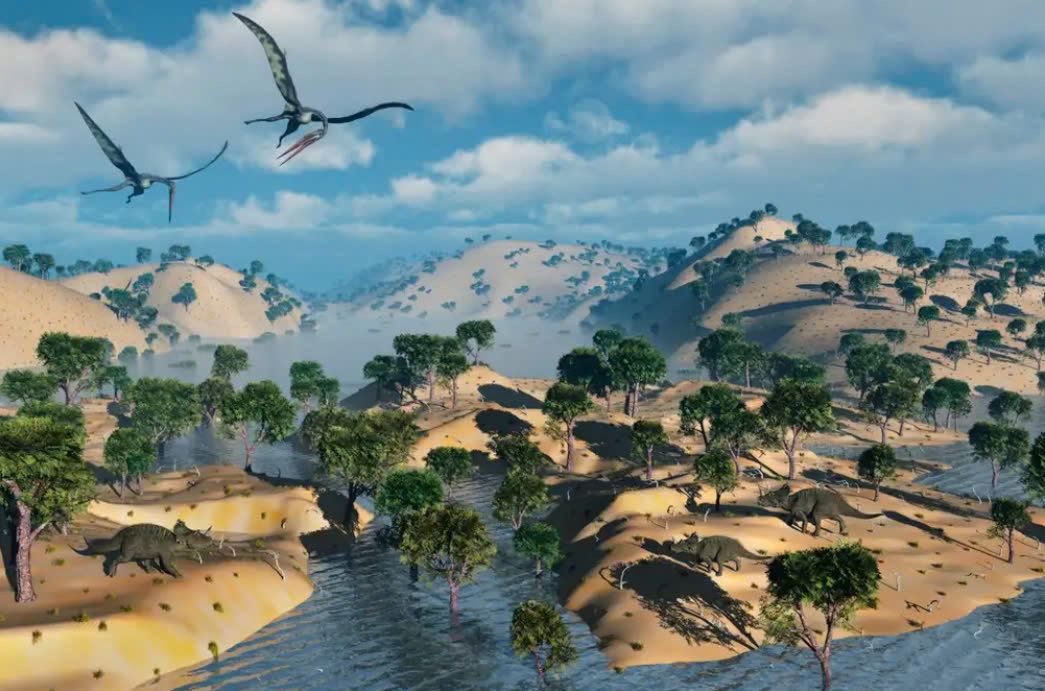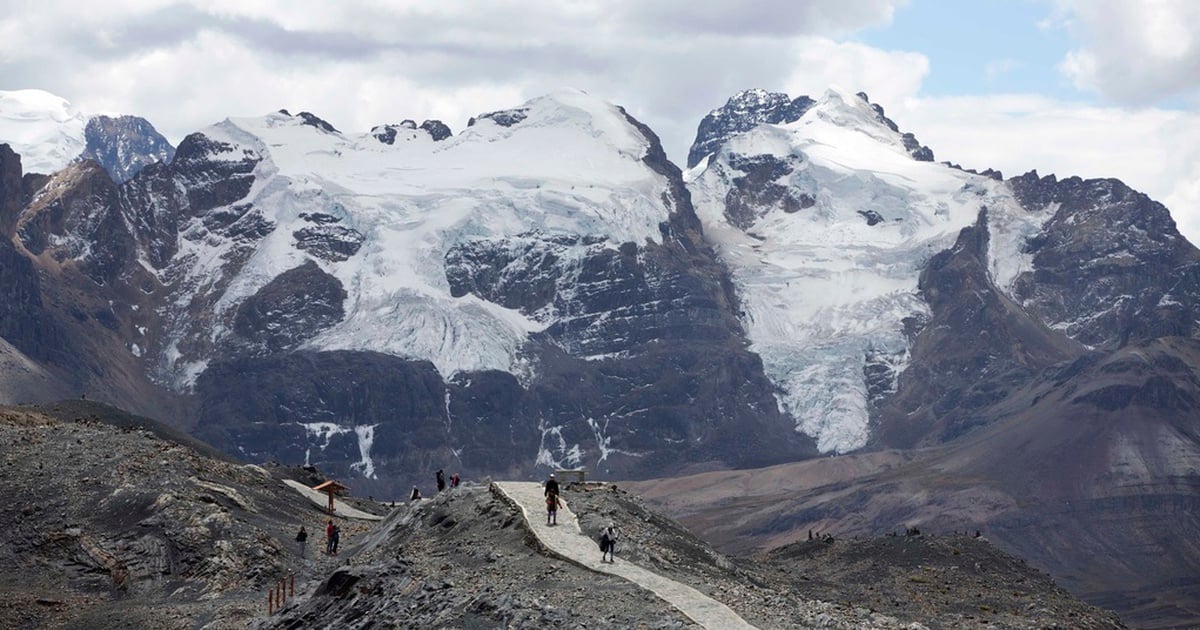During this period of land animal and plant evolution, the average global temperature fluctuated around 24°C and sometimes reached 36°C. This compares to current temperatures of only around 14°C-15°C.

Cretaceous period simulation image. Photo: MasPix
Emily Judd, of the Smithsonian National Museum of Natural History in Washington DC, said their new research suggests that temperatures during greenhouse (CO2-rich) climates may have been even warmer than previous studies suggested.
During the hottest periods, average temperatures in the tropics could reach 42°C, making some areas too hot for plants and animals to survive. Even the polar regions during this period had average temperatures exceeding 20°C, much higher than today.
“Over the past half billion years, there may have been periods of time when some areas were uninhabitable, or had very low biodiversity, which had serious impacts on the ecosystems and life on Earth at that time,” Judd said.
Her team also found a strong link between atmospheric carbon dioxide (CO2) concentrations and average global temperatures. Over time, the team had expected the relationship to weaken due to factors such as sunlight. However, the study found that the correlation between CO2 and temperature remained strong.
“This is surprising,” Judd said. “It implies that atmospheric carbon dioxide concentrations play an even larger role in regulating Earth’s climate than previously thought.”
Experts have long known that for most of the past 500 million years — a period known as the Proterozoic — Earth was hotter than it is now and did not have any major ice sheets.
Judd stressed that just because the climate was much warmer than it is now doesn't mean humans shouldn't worry about climate change. What matters is the pace of change.
In the past, periods of rapid climate change have led to mass extinctions because species could not adapt in time. The current rate of warming is even faster than those periods.
Currently, global warming and climate change are causing humans to face major challenges such as depleted water resources, stronger and more frequent storms, rising sea levels and reduced habitable and arable land.
Ha Trang (according to NewScientist)
Source: https://www.congluan.vn/trai-dat-cach-day-500-trieu-nam-tung-nong-hon-ta-nghi-post313622.html




![[Photo] Closing of the 11th Conference of the 13th Central Committee of the Communist Party of Vietnam](https://vstatic.vietnam.vn/vietnam/resource/IMAGE/2025/4/12/114b57fe6e9b4814a5ddfacf6dfe5b7f)


![[Photo] Overcoming all difficulties, speeding up construction progress of Hoa Binh Hydropower Plant Expansion Project](https://vstatic.vietnam.vn/vietnam/resource/IMAGE/2025/4/12/bff04b551e98484c84d74c8faa3526e0)


























































































Comment (0)